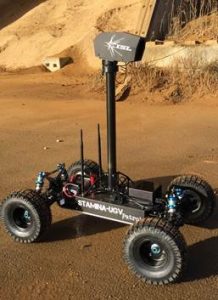World War III – The War of Data Scientists
Just before the break of dawn on a crisp autumn morning, while the rest of the world was still adding another blanket to their cosy beds, Poland had experienced something that would change the future of humankind forever. The German army under Adolf Hitler had invaded the country, plunging the world into a six-year-long war that would claim the lives of tens of millions of people. The World War 2 had officially begun.
Over eighty years down the line, World War 2, or the Second World War, is still considered the deadliest war in history, costing over $4.1 trillion, killing 55 million civilians, and further impacting the lives of the numerous generations that came after (who can forget the infamous atomic raids in Hiroshima and Nagasaki and the tragedy that followed?).
While it is easy to hope that humankind has outgrown the need for these global wars after experiencing their aftermath, the recent tit-for-tat assaults between the USA and Iran made sure that World War 3 was an international topic of conversations for several days. The important question on everyone’s minds remained the same – What would happen if World War 3 started?

Preparing for the war of the future
“The war of the future is going to be very different from what most people expect,” comments Navnit Belur (Faculty, Bachelor of Data Science, SP Jain Global). “The war is not going to be fought between armies, but between computers. With the advent of data science and big data, you are capable of taking down the entire economy of a country while sitting in a remote location. Why, then, would you need a physical army at all?”
The war of computers and Artificial Intelligence might seem like a futuristic concept to many of us, but with the pace with which armies around the world have been adapting automation, a war powered by the applications of artificial intelligence really isn’t far away. For example, during the Bastille Day Parade 2019, the French army revealed some of its latest automated weaponry including:
- Stamina-UGV Aurochs – Developed by the Franco-German Saint-Louis Research Institute, STAMINA AUROCHS is a low-cost image processing technology that allows autonomous traccking of routes without GPS. The technological brick navigation image STAMINA is mounted on robots to which it gives autonomy. It also features undeniable assets in terms of agility, speed, and comfort, which allows it to perform crucial tasks such as the transport of casualties.

Image Courtesy – ISL
- Colossus – The Colossus is a universal technical support robot and modular designed for intervention in dangerous areas. With a carrying ability of 1 tonne, the Colossus is able to progress on any kind of terrain and boasts up to 12 hours of autonomy in an operational situation.

Image Courtesy – shark-robotics.com
- NERVA LG – The NERVA LG is a versatile multi-purpose robotic system used for surveillance, detection and patrolling. The UGV can be configured for multiple roles including CBRNe (chemical, biological, radiological, nuclear and explosives) detection, reconnaissance, observation, surveillance, counter-IED (improvised explosive devices) for route clearance, smoke generator, firefighting, transportation, and other civil security missions.

Image Courtesy – ArmyRecognition.com
Shaping World War 3 with Data Science
With an abundance of data available, the role played by Data Analytics in shaping warfare is becoming profusely clear every day. The best example for this would be the United States ARGUS ground surveillance system, that collects more than 40 gigabytes of information per second. With so much data available at our fingertips, the priority right now is to utilise this information in the best way possible. This is where the role of a highly trained Data Scientist comes in.
Many intelligence organisations around the globe have realised this need for data scientists, and have already started hiring for the roles. For example, the USA’s Central Intelligence Agency (CIA) currently has a dedicated post for a Data Scientist with a starting salary ranging from $67,968 to $126,062. On the other hand, a Data Scientist working with the Australian Secret Intelligence Service (ASIS) can expect a starting salary between $77,637 and $107,064.
While working with these highly sought-after organisations might sound like a dream come true for many, the harsh reality is that there are only a handful of candidates who are qualified for the roles. A mere certification in data science or big data will not suffice anymore – the roles demand skilled data scientists with hands-on technical experience who are trained to make data-driven decisions, and this is where we are currently facing a severe shortage.
Saving Lives with Big Data
“Nuclear warfare has already become obsolete in a world where everyone has their own nuclear weapons,” says Dr Abhijit Dasgupta (Director – Big Data & Visual Analytics and Bachelor of Data Science, SP Jain Global). “One of the most interesting parts of using data science in military avionics is the effect, or lack thereof, that it’ll have on civilian lives. Unlike the second world war where the German airplanes devastated whole towns using carpet bombings, data science in military avionics will ensure that even with the war, nothing apart from the designated targets will be harmed. The concept of carpet bombing has become a thing of the past. Right from the civilians to the trees to the animals – if you are not the military target, you will survive.”
The use of these algorithms, however, go much beyond acquiring targets on the conventional battlefield. Currently, these algorithms are being used for many purposes including:
- Target prioritisation
- Processing intelligence
- Understanding the patterns behind suicide bombings and Improvised Explosive Devices (IEDs)
- Blast signature analysis, and
- Post-strike damage assessment
The Other Side of the Coin
The appeal of autonomy is obvious – we are talking about robots, which are cheaper and much more expandable than human beings. However, for a machine to wander the battlefield, it must be intelligent enough to understand the social, cultural and psychological contexts before identifying a valid target. Unfortunately, with the current pace of AI development and the lack of skilled data scientists and big data experts globally, it will be decades before this becomes a reality.
Another major argument raised against automated weaponry is the low entry cost and the lack of a heat signature. “If the weapon lands in the hands of the ‘wrong’ crowd, the ramifications for humanity could be huge,” Dr Dasgupta continues. “The entry cost for creating this weapon is low. With just a couple of data scientists, computer science engineers, and drone delivery experts, you are capable of attacking a massive number of localities with almost no repercussions. What we need to understand is that it is not a war of finances and resources anymore. It is a war of intelligence.”




